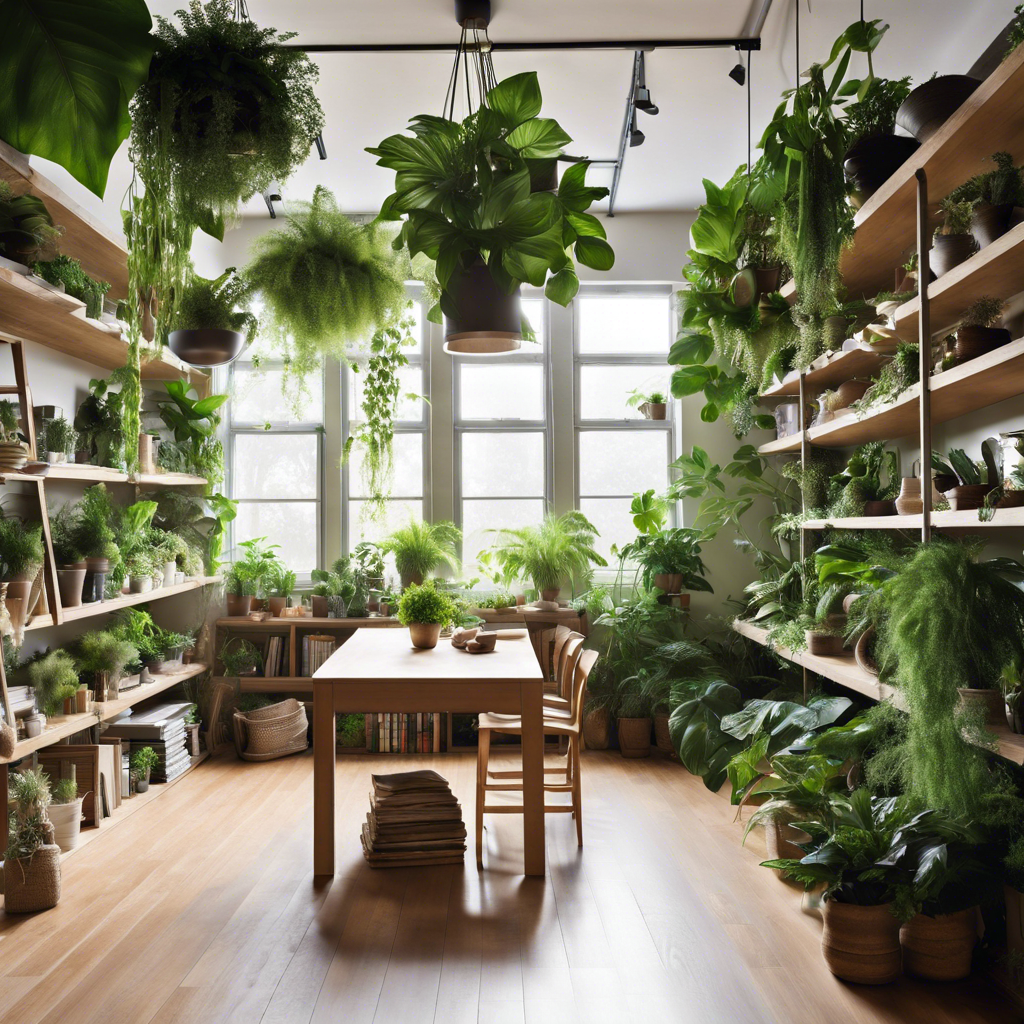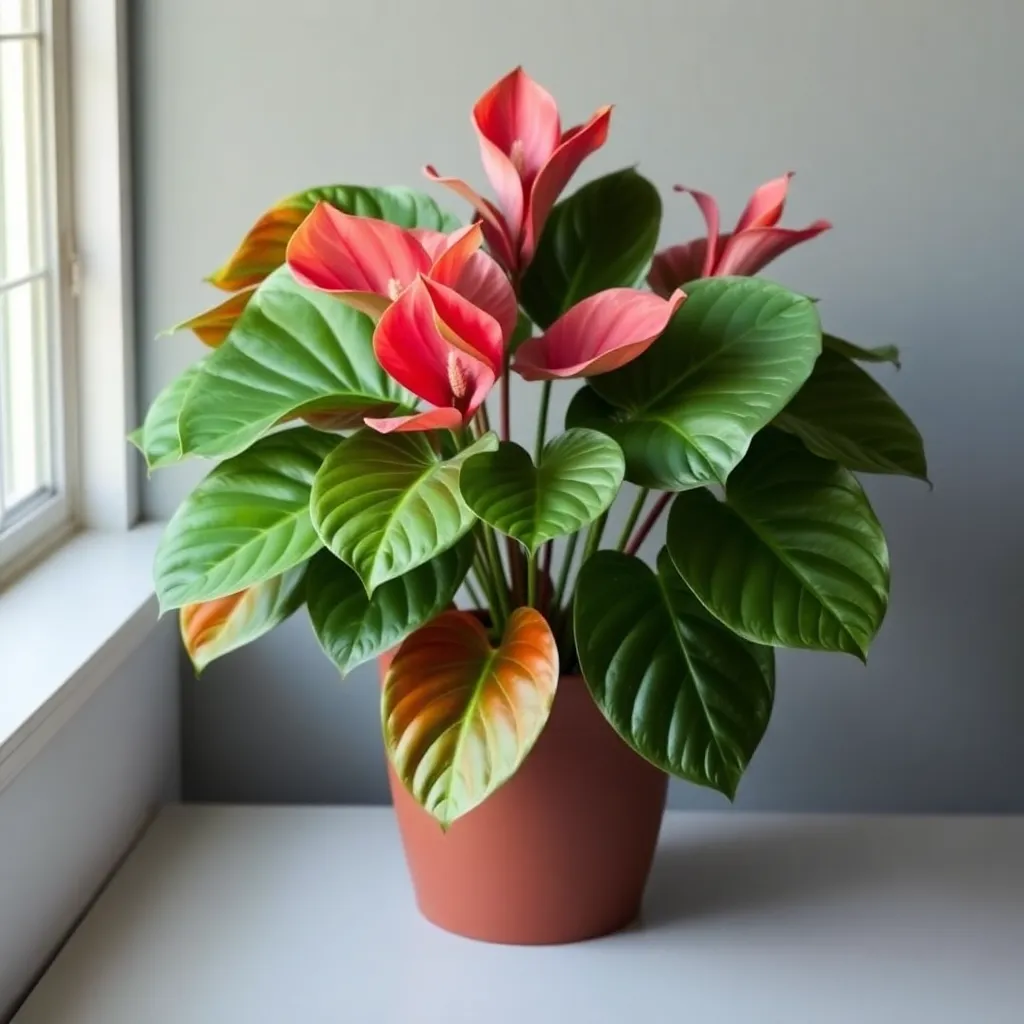
Indoor plants
Philodendron – The Ultimate Guide to Growing and Caring for This Iconic Indoor Plant


DINKAR
10/22/2024
Introduction
Indoor plants have surged in popularity over recent years, transforming homes, offices, and other interior spaces into green sanctuaries. Among the many houseplants that have found favor, the Philodendron stands out as one of the most iconic and beloved. Known for its striking foliage and easy care requirements, the Philodendron family boasts a wide variety of species and hybrids, each with its own unique appeal.
This comprehensive guide will delve into everything you need to know about Philodendrons, including their types, care tips, propagation methods, and benefits of having them indoors. Whether you're a seasoned plant parent or a complete novice, this blog will help you master the art of growing a Philodendron in your home.
1. What is a Philodendron?
Philodendron is a large genus of plants in the Araceae family, with over 480 known species. Native to the tropical rainforests of Central and South America, these plants are famous for their large, lush, heart-shaped or lobed leaves. The name “Philodendron” comes from the Greek words "philo", meaning love, and "dendron", meaning tree, which reflects their affinity for growing up trees in their natural habitats as climbers.
Philodendrons are primarily grown as houseplants due to their striking foliage, versatility, and ability to thrive in indoor environments. Depending on the species, some Philodendrons grow as trailing vines, while others develop into upright, bushy plants.
2. Types of Philodendrons
There is a vast variety of Philodendrons to choose from, each offering different aesthetic features. Here are some of the most popular types:
- Heartleaf Philodendron (Philodendron hederaceum): One of the most common varieties, this Philodendron has heart-shaped, glossy green leaves and thrives in low light. It's a popular choice for hanging baskets or trailing down shelves.
- Philodendron Birkin: This modern hybrid features striking dark green leaves with creamy white pinstripes. Its compact growth habit makes it an excellent choice for tabletops or desks.
- Philodendron Brasil: This variety offers vibrant variegated leaves, with a striking combination of green and yellow shades. Its fast-growing, trailing nature makes it perfect for hanging baskets or plant shelves.
- Philodendron Xanadu: A more upright variety, Xanadu has deeply lobed leaves that give it a more structured, architectural look. It's a great choice for floor pots, adding a tropical vibe to any room.
- Philodendron Pink Princess: A rare but highly sought-after plant, the Pink Princess is famous for its dramatic dark green leaves adorned with pink variegation. Its stunning appearance makes it a collector’s item for plant enthusiasts.
- Philodendron Micans: With velvety, deep green leaves with a bronze sheen, the Micans is a beautiful trailing variety that brings elegance to any indoor space.
3. How to Care for Philodendrons
One of the main reasons Philodendrons are so popular is because of their low-maintenance care requirements. Here’s a detailed guide on how to care for these lovely plants:
A. Light Requirements
Philodendrons are adaptable when it comes to light, but they prefer bright, indirect sunlight. Most varieties can also tolerate low-light conditions, making them a good choice for dimmer rooms or spaces. Avoid direct sunlight, as it can scorch their delicate leaves, leading to browning or yellowing.
For optimal growth, place your Philodendron near a north or east-facing window. If you're placing it in a low-light area, keep in mind that its growth rate may slow down.
B. Watering
The key to watering Philodendrons is to let the soil dry out slightly between waterings. These plants prefer consistently moist soil, but they don’t like to sit in water. Overwatering can lead to root rot, which is one of the most common problems faced by Philodendron owners.
To check if your plant needs water, stick your finger about an inch into the soil. If it feels dry, it’s time to water. Make sure to use a pot with drainage holes to avoid water buildup.
C. Humidity and Temperature
Philodendrons are tropical plants and prefer higher humidity levels. While they can adapt to average indoor humidity, boosting the humidity around the plant can encourage healthier, more vibrant growth. You can increase humidity by misting the leaves, placing a humidifier nearby, or grouping plants together.
As for temperature, Philodendrons prefer warm environments. Keep your plant in a room with temperatures between 65°F and 80°F (18°C to 27°C). Avoid placing them in drafty areas or near cold windows during winter.
D. Soil and Potting
Philodendrons thrive in well-draining, loose soil. A standard indoor potting mix works well, but you can also create your own mix by combining equal parts of potting soil, peat moss, and perlite for better aeration and drainage.
Repot your Philodendron every 1-2 years, or when you notice the plant becoming root-bound. Repotting allows for continued growth and gives the plant access to fresh nutrients.
E. Fertilization
To keep your Philodendron healthy and growing, feed it with a balanced, water-soluble fertilizer every month during the growing season (spring and summer). Reduce fertilizing in the fall and winter, when the plant's growth naturally slows down.
4. Propagating Philodendrons
Philodendrons are incredibly easy to propagate, making them a favorite for plant lovers looking to expand their collection or share plants with friends. The most common method of propagation is through stem cuttings.
Step-by-Step Propagation Guide:
- Select a Healthy Stem: Choose a stem that has at least two or three healthy leaves and a visible node (the bump where the leaf meets the stem).
- Cut the Stem: Using clean, sharp scissors or pruning shears, cut just below the node.
- Place in Water or Soil: You can propagate Philodendron cuttings either in water or directly in soil. If using water, place the cutting in a jar of water and make sure the node is submerged. Change the water every few days to keep it fresh. If using soil, plant the cutting in moist, well-draining potting mix and keep it in a bright spot.
- Wait for Roots: In about 2-4 weeks, you'll start to see roots developing. Once the roots are about an inch long, you can transfer the water-propagated cutting into soil.
5. Common Problems and Solutions
While Philodendrons are generally hardy and resistant to pests and diseases, there are a few issues that can arise:
- Yellow Leaves: This can be a sign of overwatering or lack of light. Check the soil moisture and adjust your watering schedule accordingly.
- Brown Tips: Brown leaf tips are usually a sign of low humidity. Mist the leaves regularly or increase humidity in the room.
- Leggy Growth: If your Philodendron is stretching and becoming leggy, it’s likely not getting enough light. Move it to a brighter spot or provide supplemental lighting.
- Pests: Common pests include spider mites, aphids, and mealybugs. You can treat infestations with insecticidal soap or by wiping the leaves with a damp cloth.
6. Benefits of Having a Philodendron Indoors
Philodendrons do more than just beautify your home; they also offer several benefits:
- Air Purification: Like many houseplants, Philodendrons help improve indoor air quality by removing toxins such as formaldehyde and benzene from the air.
- Mood Booster: Having plants in your living space has been shown to reduce stress, improve focus, and increase overall well-being.
- Versatile Decoration: With their varied leaf shapes, colors, and growth habits, Philodendrons fit into any interior design style, whether it's minimalist, bohemian, or modern.
Conclusion
Philodendrons are truly a plant lover's dream. Their low-maintenance care requirements, wide variety of species, and stunning appearance make them a must-have for any indoor garden. Whether you're looking to green up a dimly lit room or add a tropical touch to your living space, the Philodendron is the perfect choice.
With proper care, your Philodendron will thrive for years, growing lush foliage and purifying the air in your home. So, if you haven't already, it's time to welcome a Philodendron into your life and experience the joy of nurturing this iconic indoor plant!